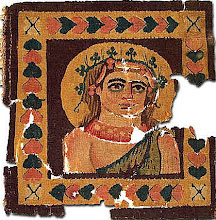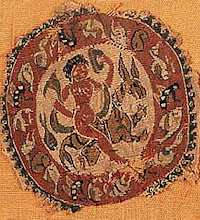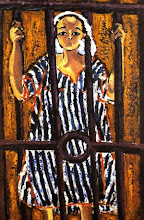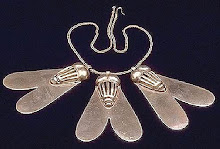In the 1st century CE, Egypt was evangelized by St. Mark who came to Alexandria two times c. 50 CE to found a School of Theology. The Romans considered St. Mark to be a threat to their authority and he was martyred in Alexandria c. 60 CE. By the 3rd century CE or so all Egyptians were Christians. By the same token, the Christians who had persecuted the Egyptian temple priests were themselves now persecuted. How was this massive Christianization accomplished? Purgatory, Heaven and Hell were all incorporated into ancient Egyptian beliefs despite the fact that their religion was polytheistic in nature. The Romans who had conquered Egypt in 30 BCE had mistreated the indigenous population so they turned to the new religion which was similar to the ancient Egyptian Book of the Dead (the Book of Going Forth by Day) with its promise of immortality in the next life.
In 284 CE, the Emperor Diocletian's persecutions of Christians were the most brutal. The Coptic calendar begins with the year 284. The Emperor Constantine became the first Roman emperor to convert to Christianity on his deathbed and declared toleration of the religion. Two churches were developed: 1) the Church of Alexandria and 2) the Church in Rome. After the persecutions, the two Churches parted. The Aryan controversy which focused on the nature of Jesus Christ gave rise to theological discussions which met in Ephesus. There were two interpretations: One was the Monophysite which said that one cannot separate the divine nature of Christ from his human nature and that Mary was the Mother of God (Orthodox Egyptian religion); the Diophysite emphasized the divinity of Jesus Christ versus the humanity of Jesus Christ which stated that Mary was the mother of the human Jesus. Sound confusing?
The 4th Council of 451 CE decided on the Diophysite interpretation but Egypt refused this branch of theology and thus began the Egyptian Coptic Church. The literal meaning of Copt is Egyptian. When the Muslims came to Egypt, the word Coptic meant religion. The Byzantine Church tried to bring the Egyptian Church back and a second wave of persecutions developed this time, Christians against Christians. The Muslims helped the Egyptian Copts and the Egyptian Copts helped the Muslims fight against the Byzantine empire and the Crusaders.
Architectural differences in Coptic versus Byzantine style - The Coptic Church is rectangular with three chapels which harkens back to the Pharaonic Temple style (Temple of Isis,Philae). For Egyptian Copts, art and architecture was a cry for identity. An example is thelate 7th century CE Coptic Church also known as the Hanging Church (also known as El Muallaqa) because it rests between two towers. There may have been an earlier 4th century church built in the vicinity but archaeological eremains have not been identified. It is dedicated to the Virgin Mary and a local female martyr. The Copts have their own popes (Patriarchs); however Coptic priests can marry while Roman Catholic priests cannot. In a Coptic Church the vaulted roof is meant to remind the faithful of Noah's Ark. The Iconostasis is separate and divides the main chapel from the church.
Coptic language was the last development of ancient Egyptian language. Hieroglyphic, Hieratic and Demotic. There are many archaeologists who claim that with Christianity, the Egyptian priests were killed or driven out and the knowledge of hieroglypics was eventually lost. While this is true, the rest of the Egyptians spoke Demotic and the Coptic language is a direct descendant giving us a linguistic link to ancient Egyptian language.
For Copts, the relics of martyrs and icons are important (as they are in Catholicism but in a different way). Saint worship is extremely significant and worship of the Virgin Mary is of the highest degree of worship and respect.There are 110 icons in the Hanging Church of the Virgin Mary.
Unlike the Roman's love of colored marble, it wasn't in strong usage in Egypt until the 11th century. Columns in a Coptic church often have one black column to symbolized Judas. The star pattern is a Mamluke innovation with a tongue and groove technique employing ivory and wood. The representation of the fish is Coptic but it was also used in Pharaonic Egypt. Baptism in the Coptic religion takes place in a font where the infant is dipped into the water three times to symbolize the Trinity.
Thursday, November 12, 2009
Subscribe to:
Post Comments (Atom)


































































No comments:
Post a Comment